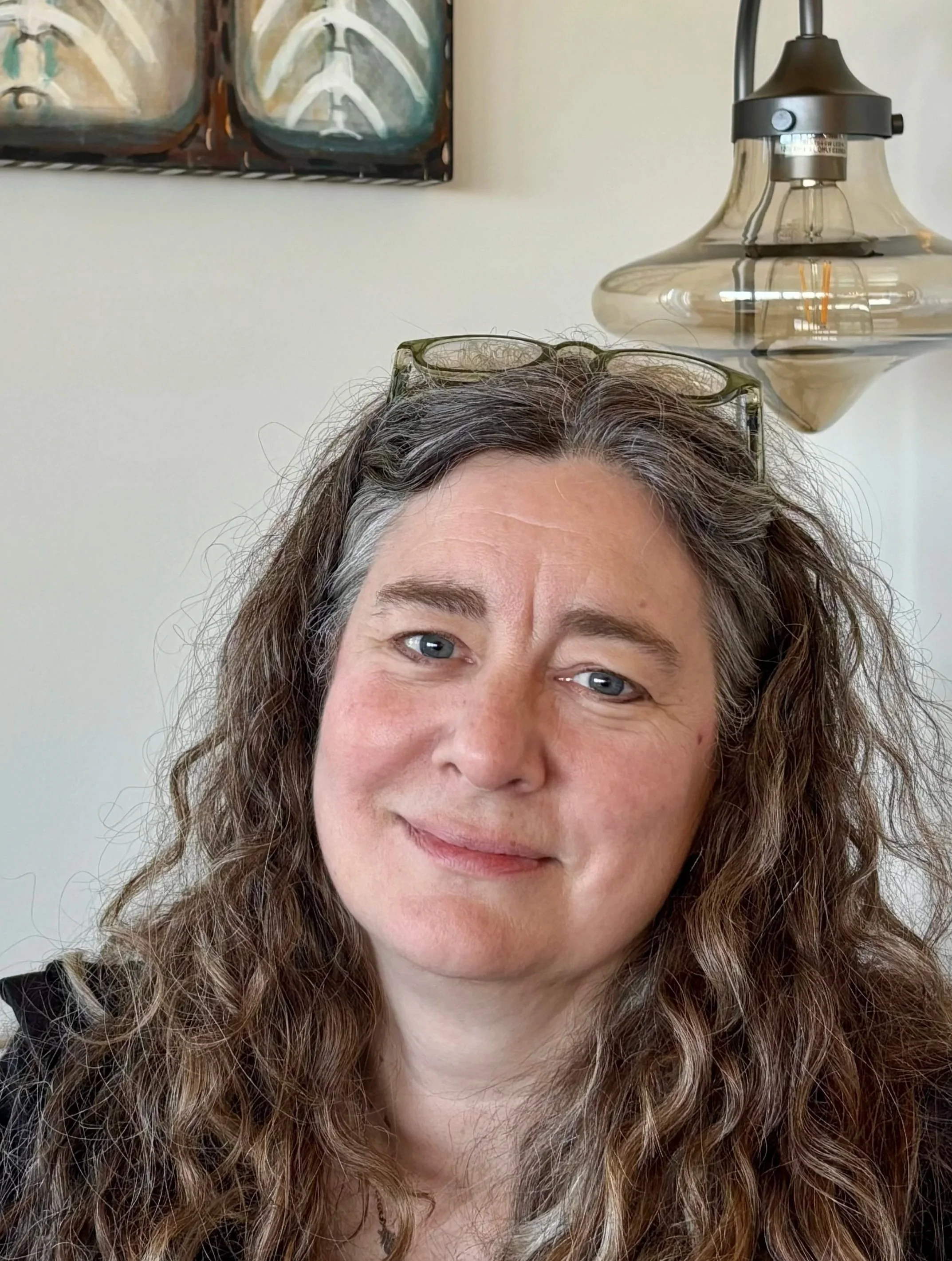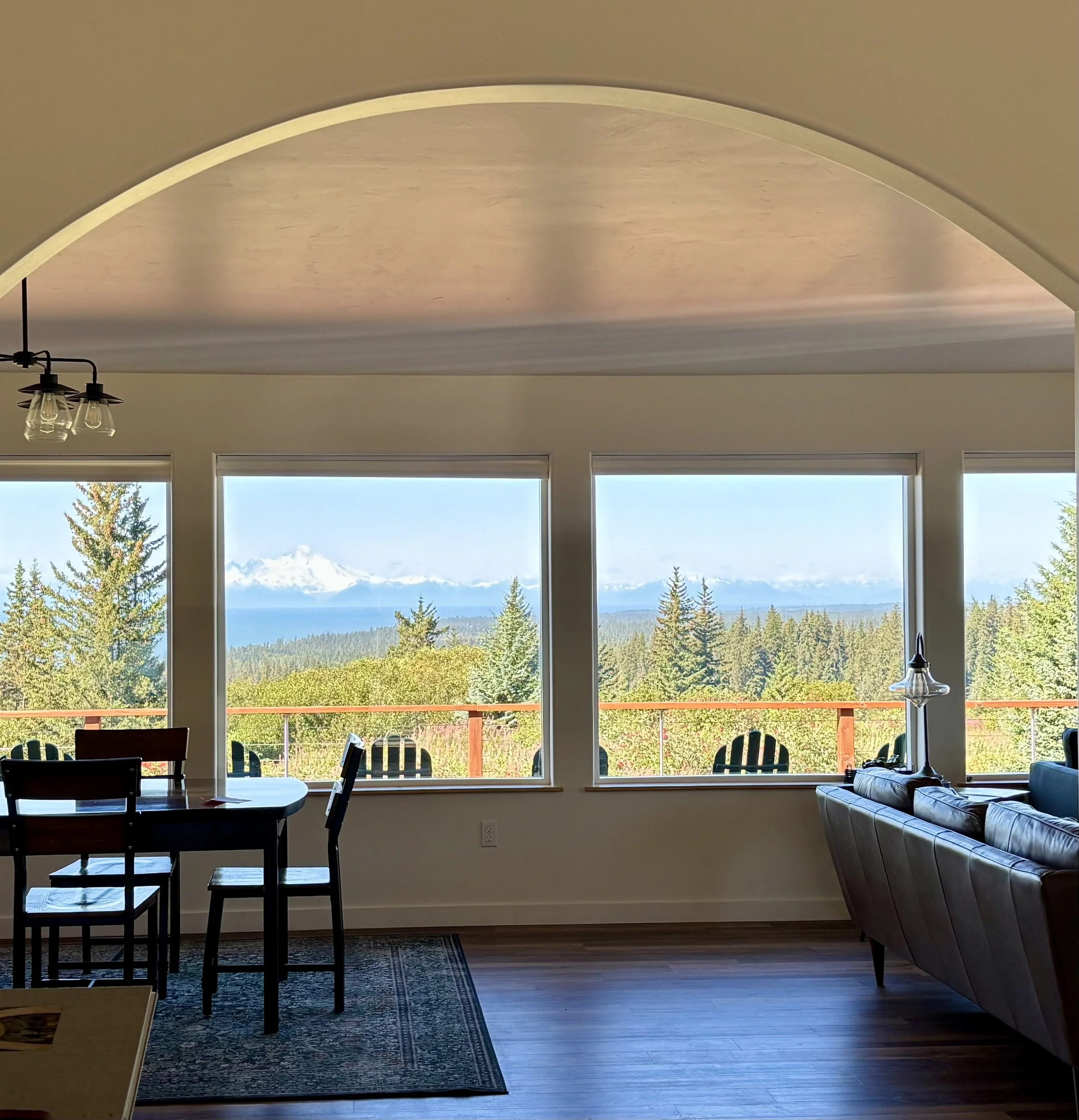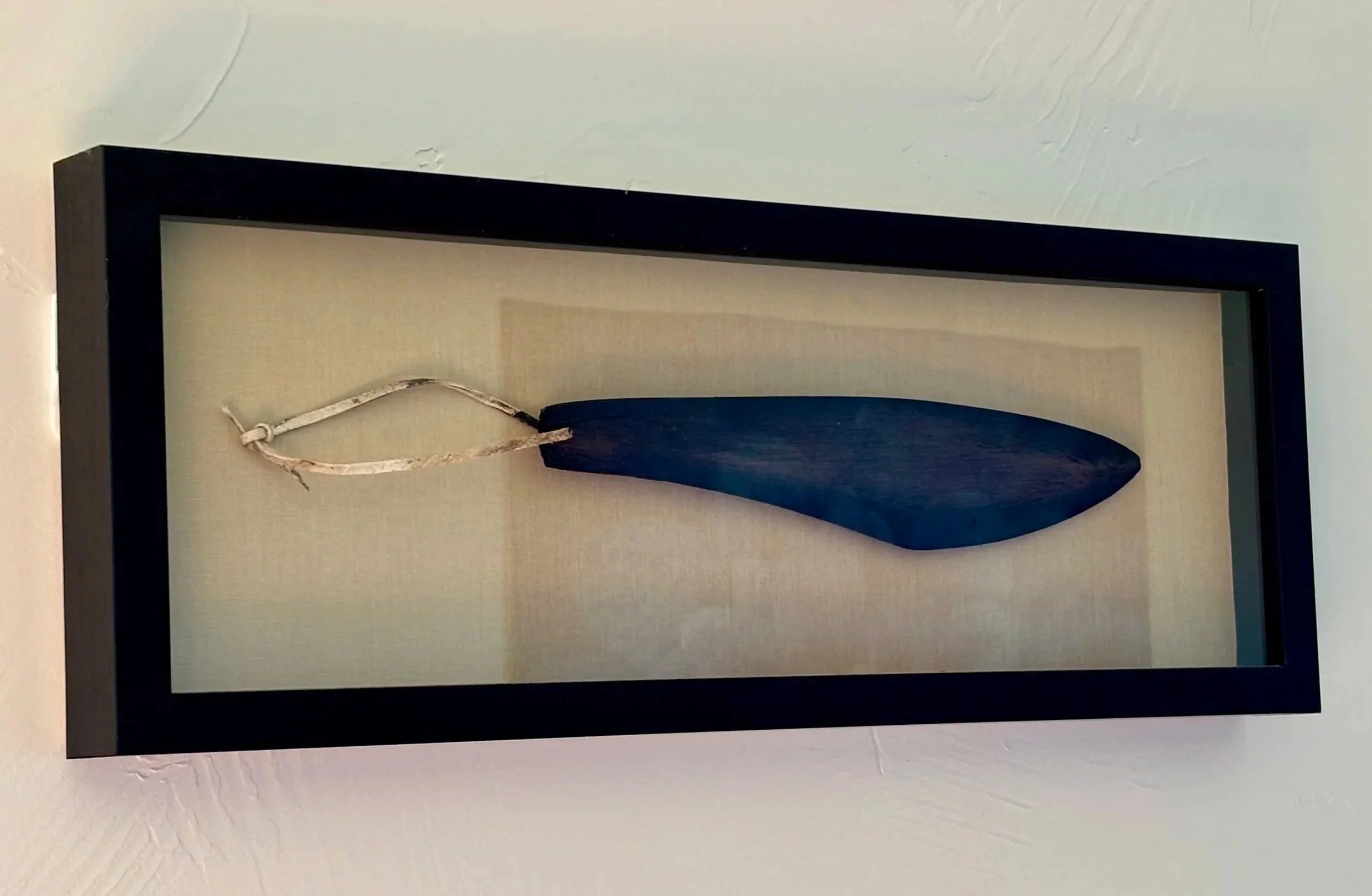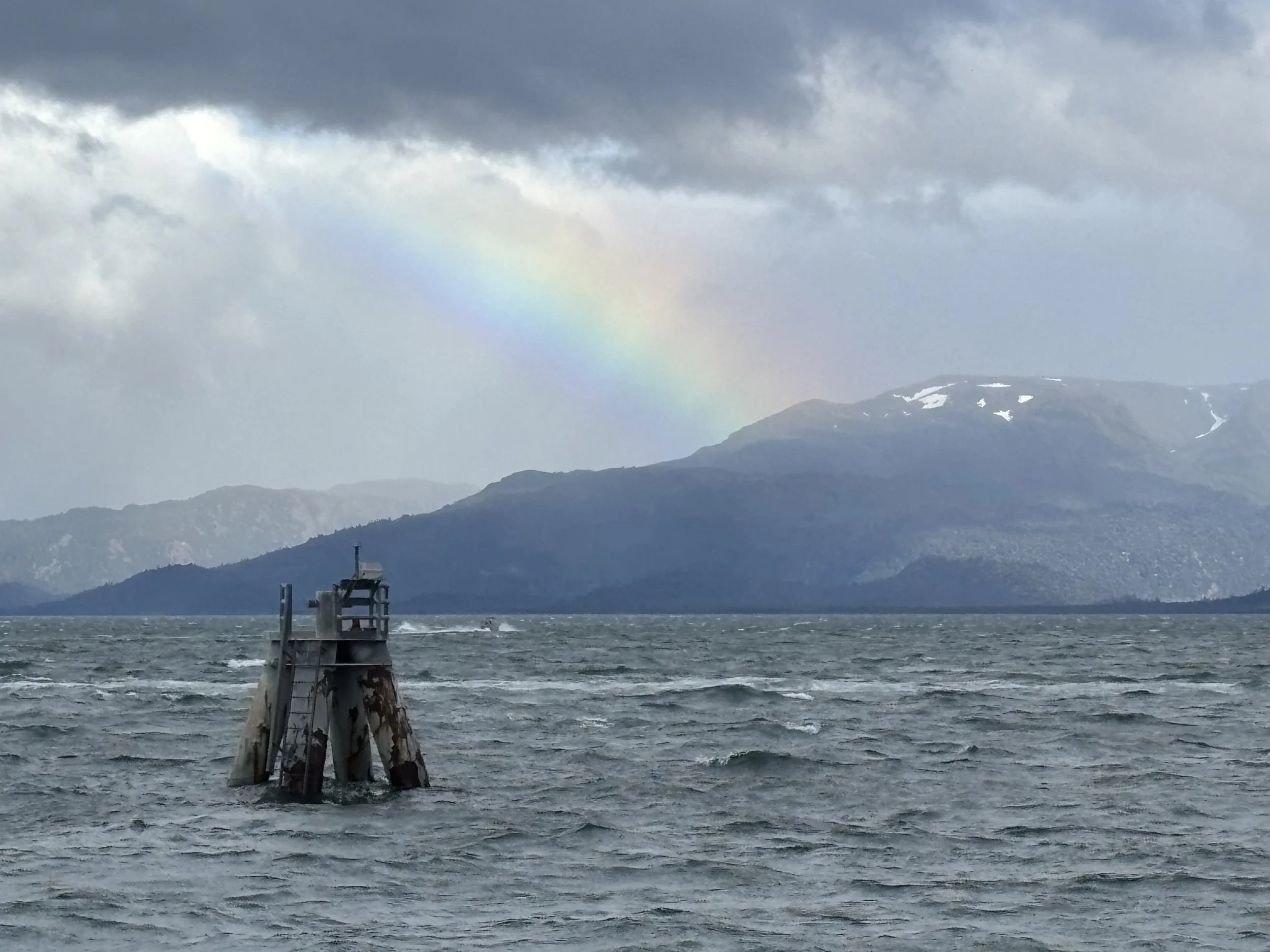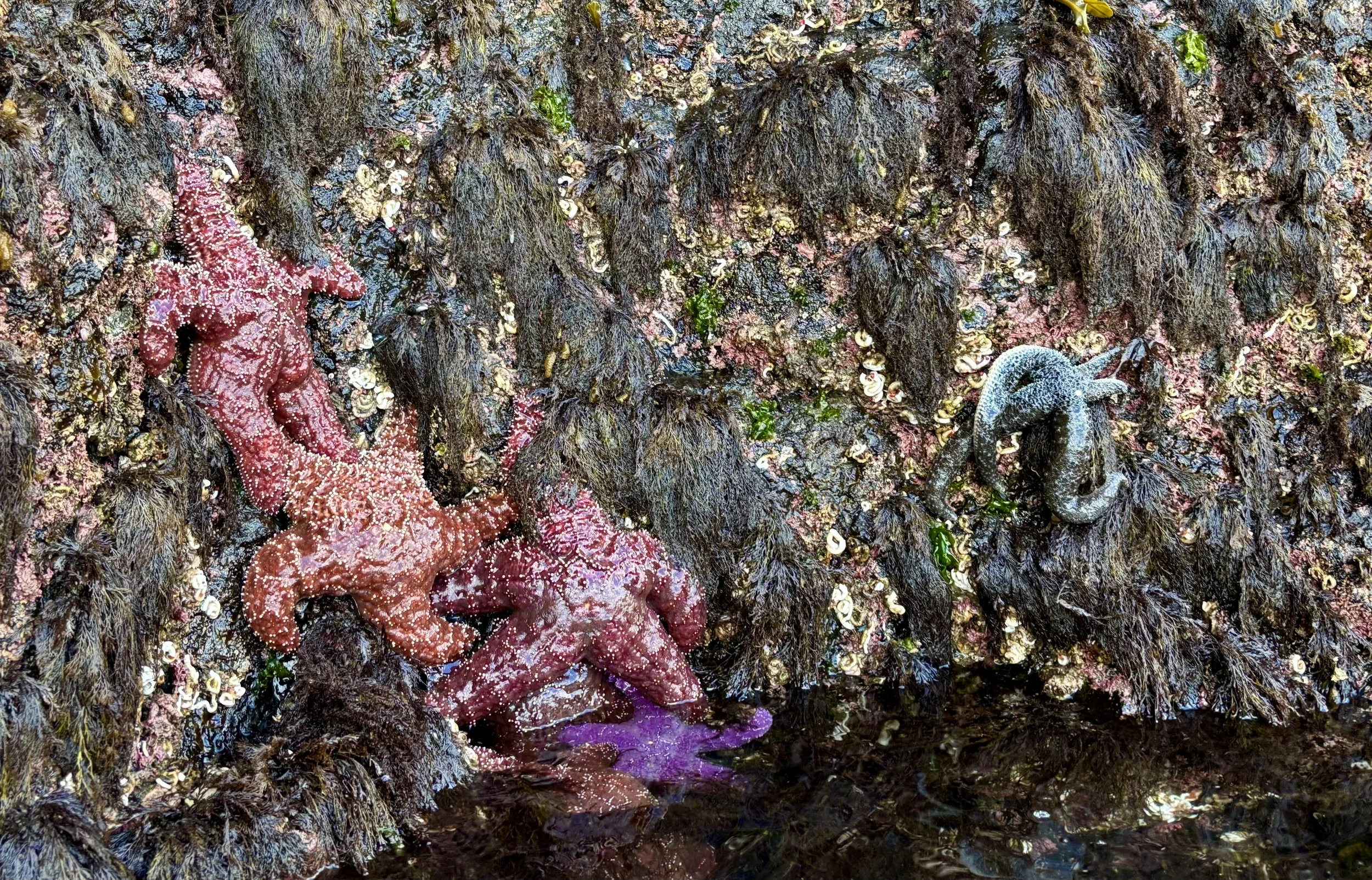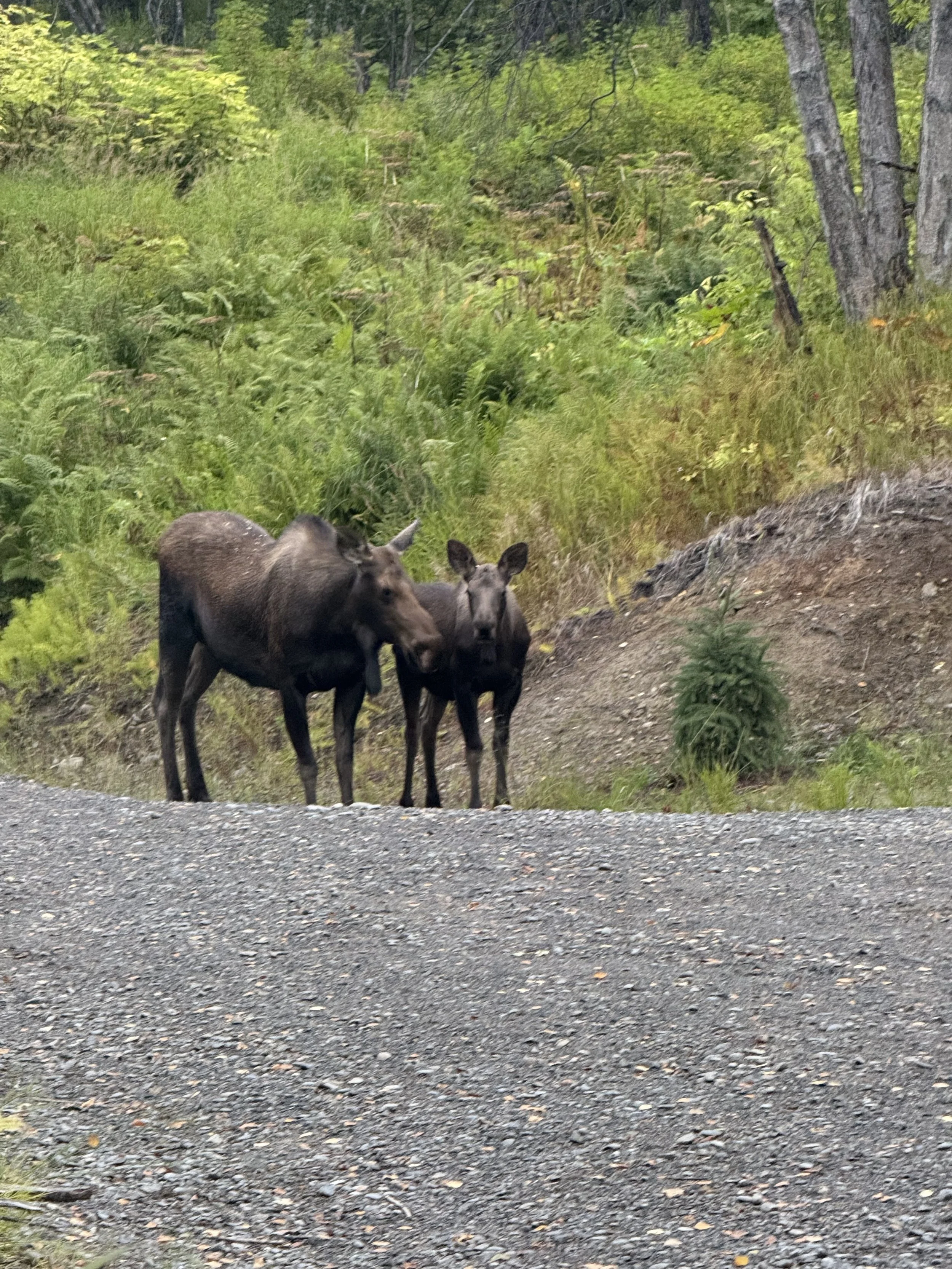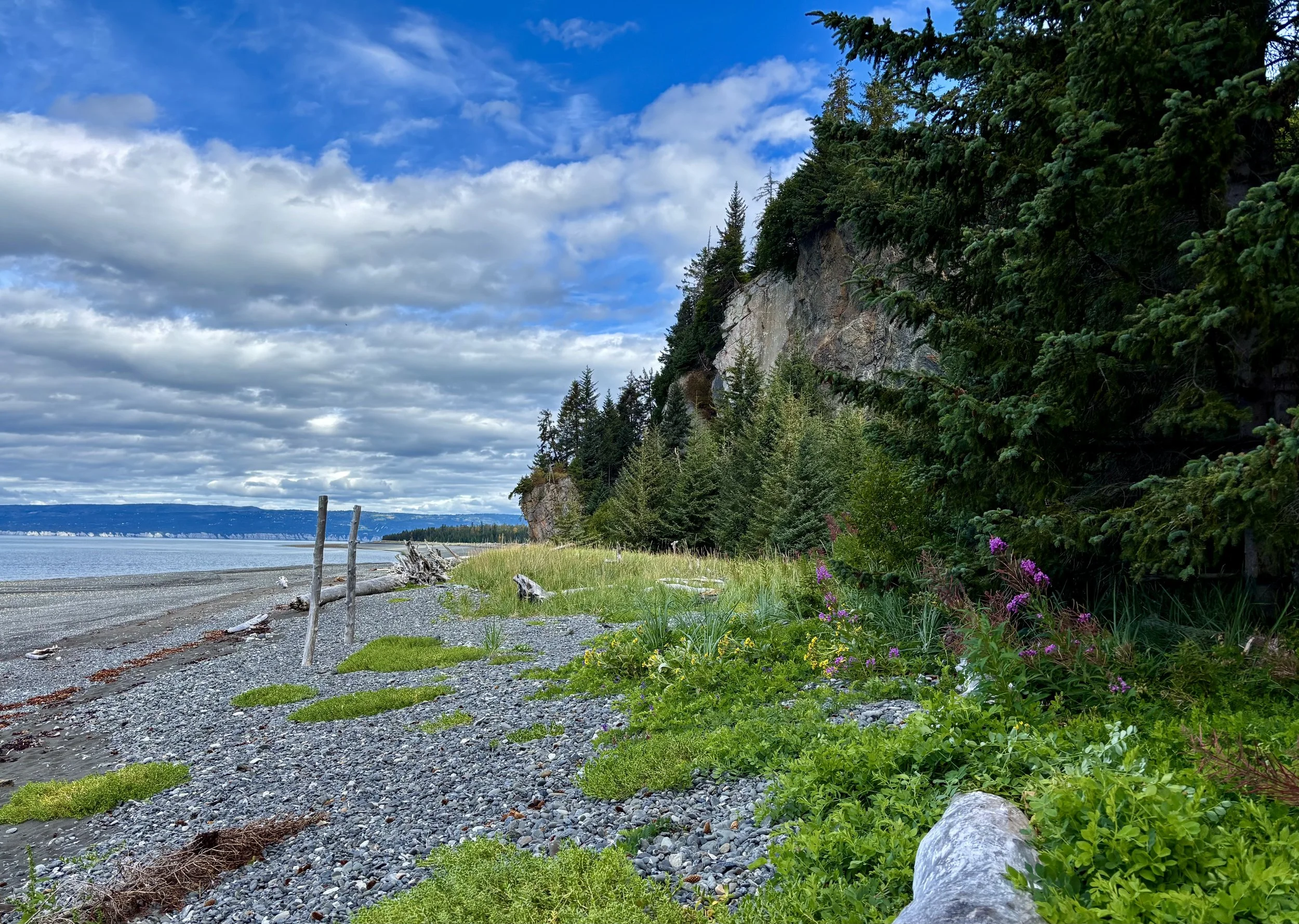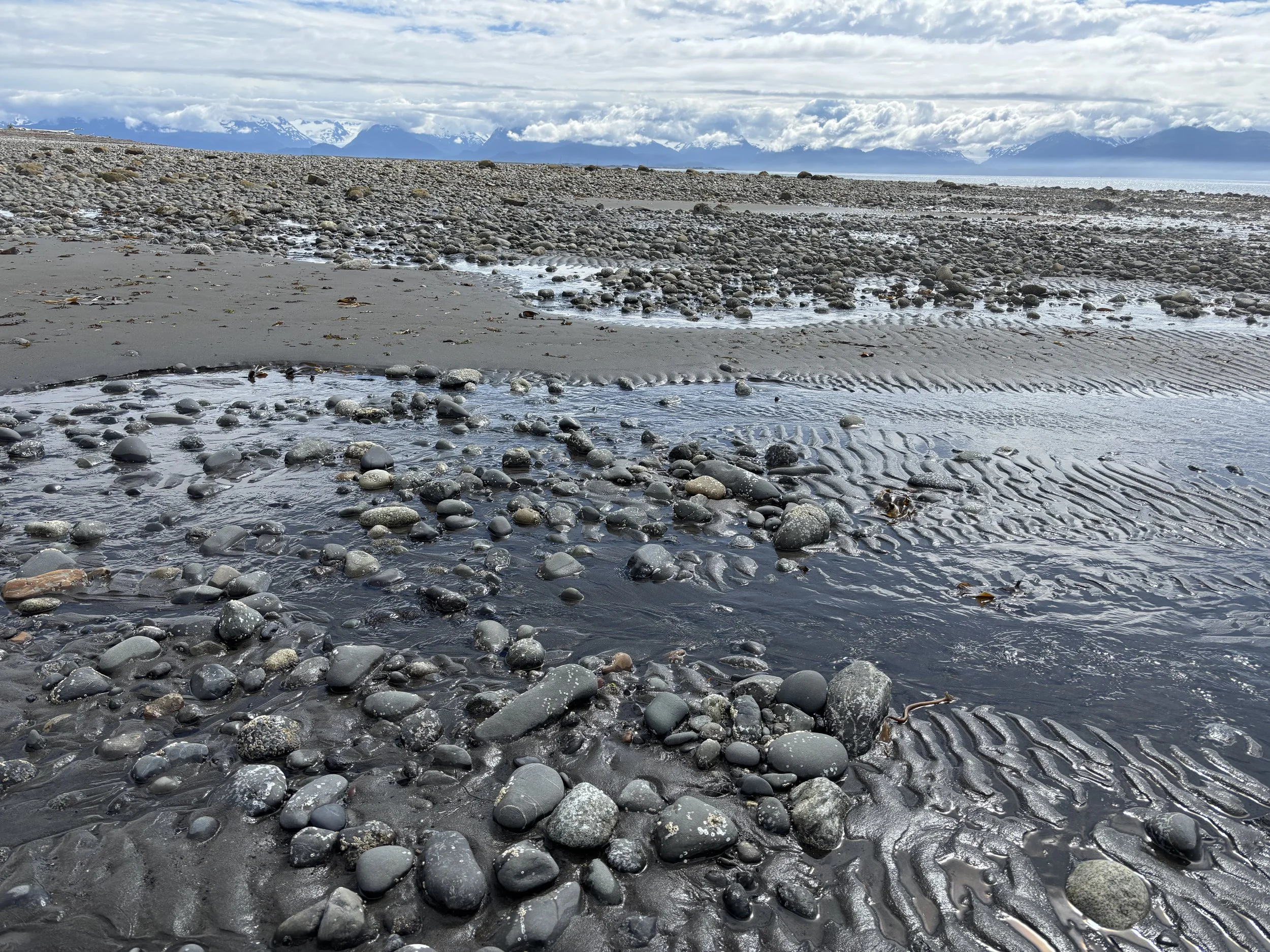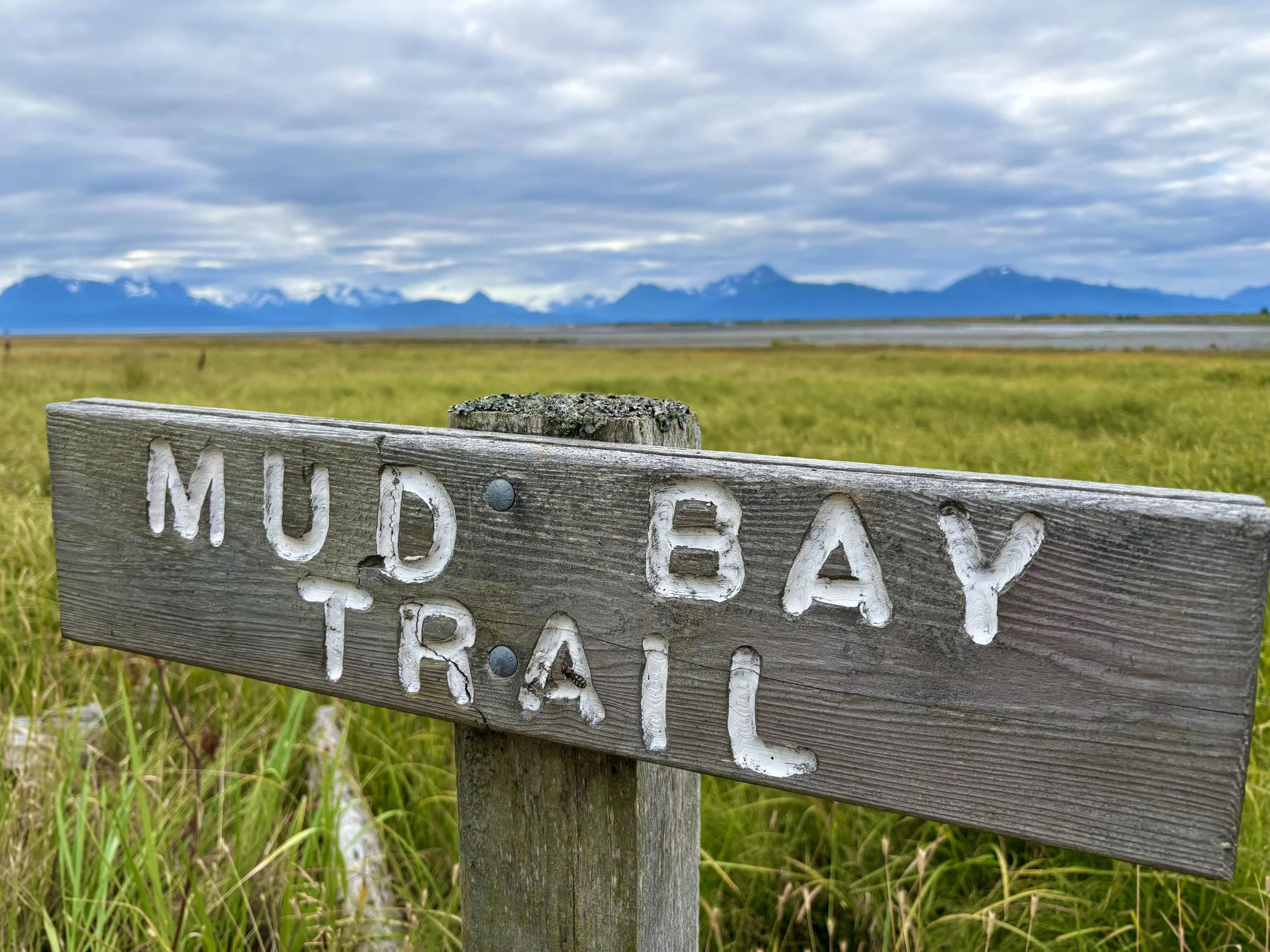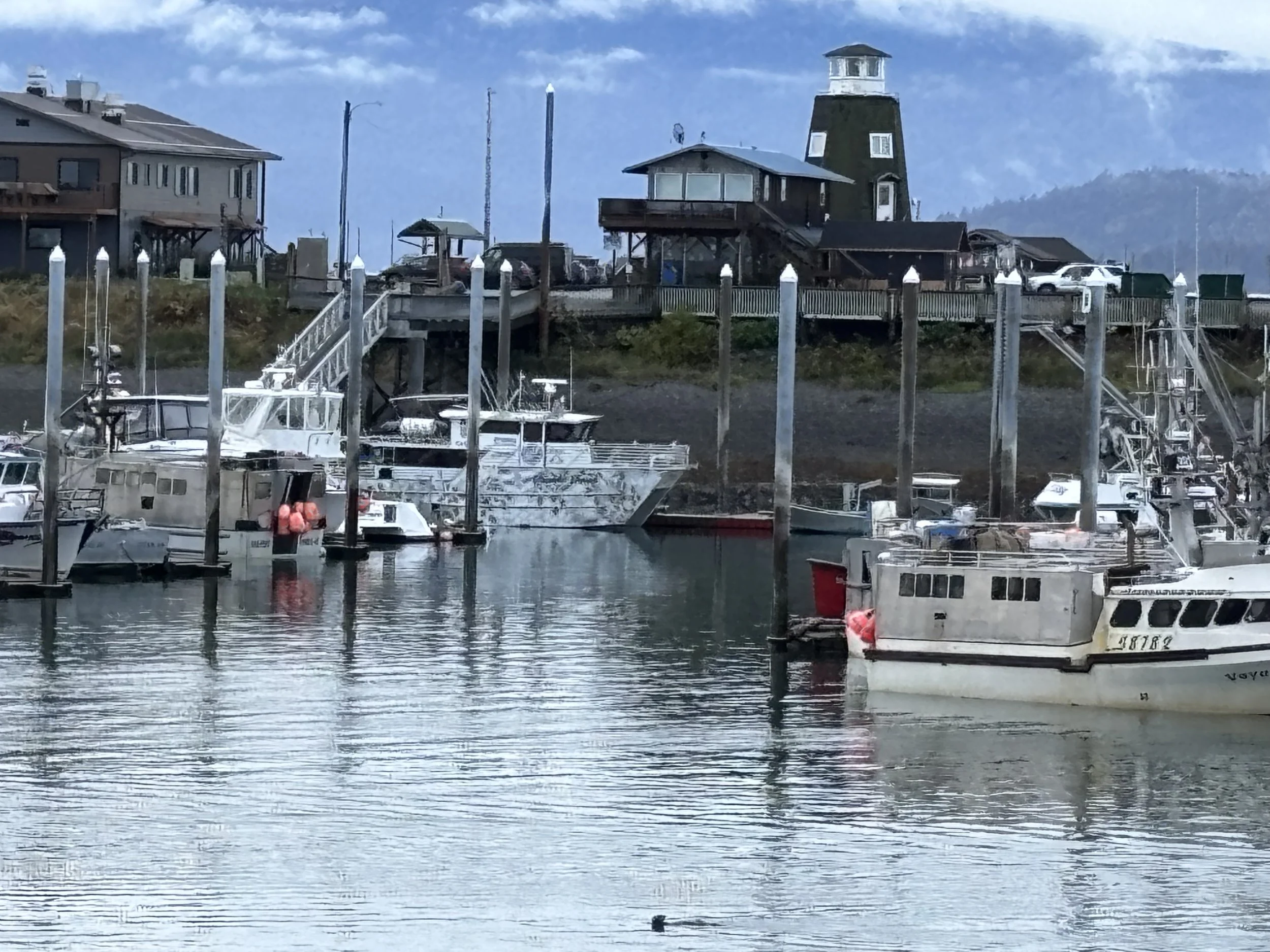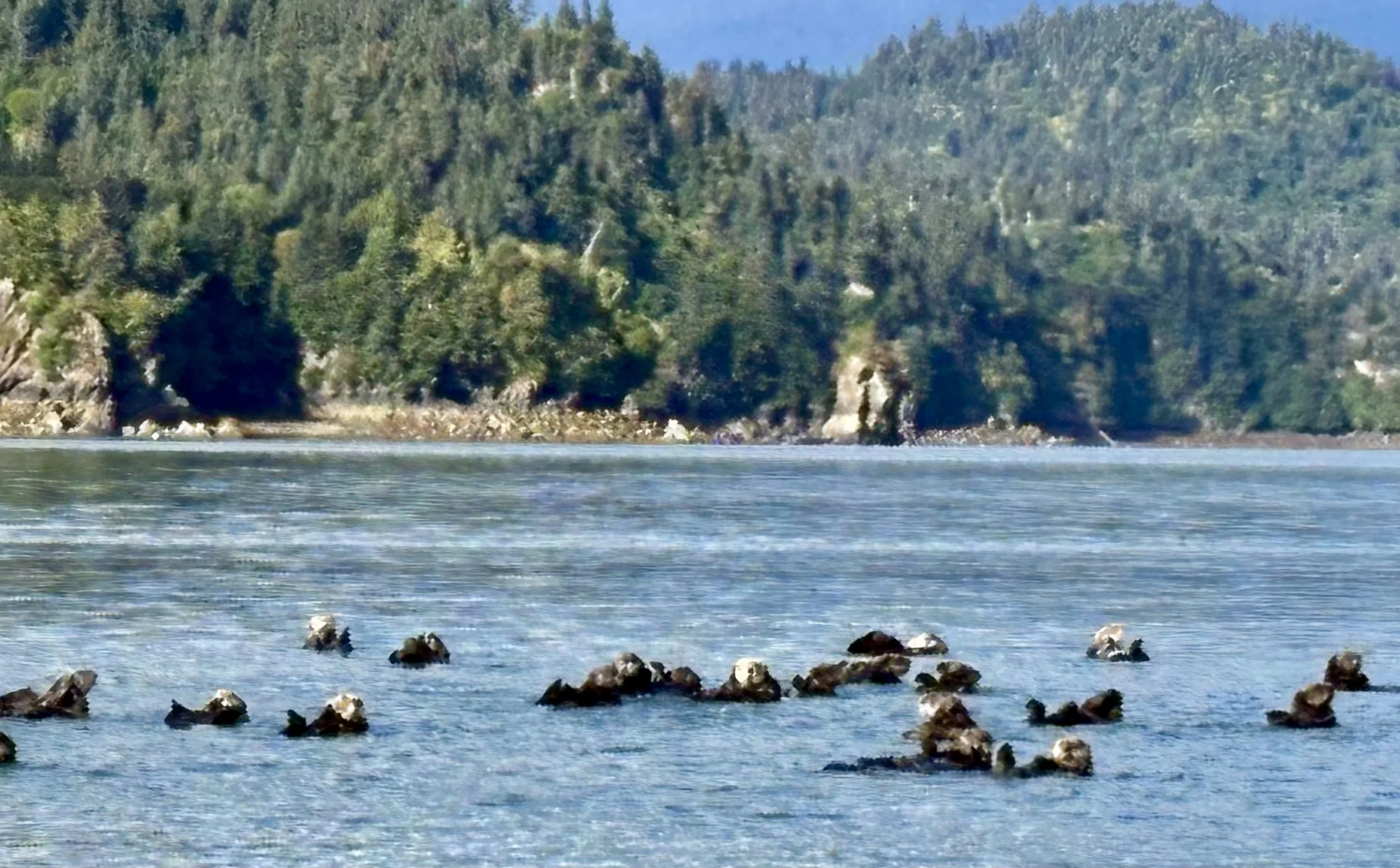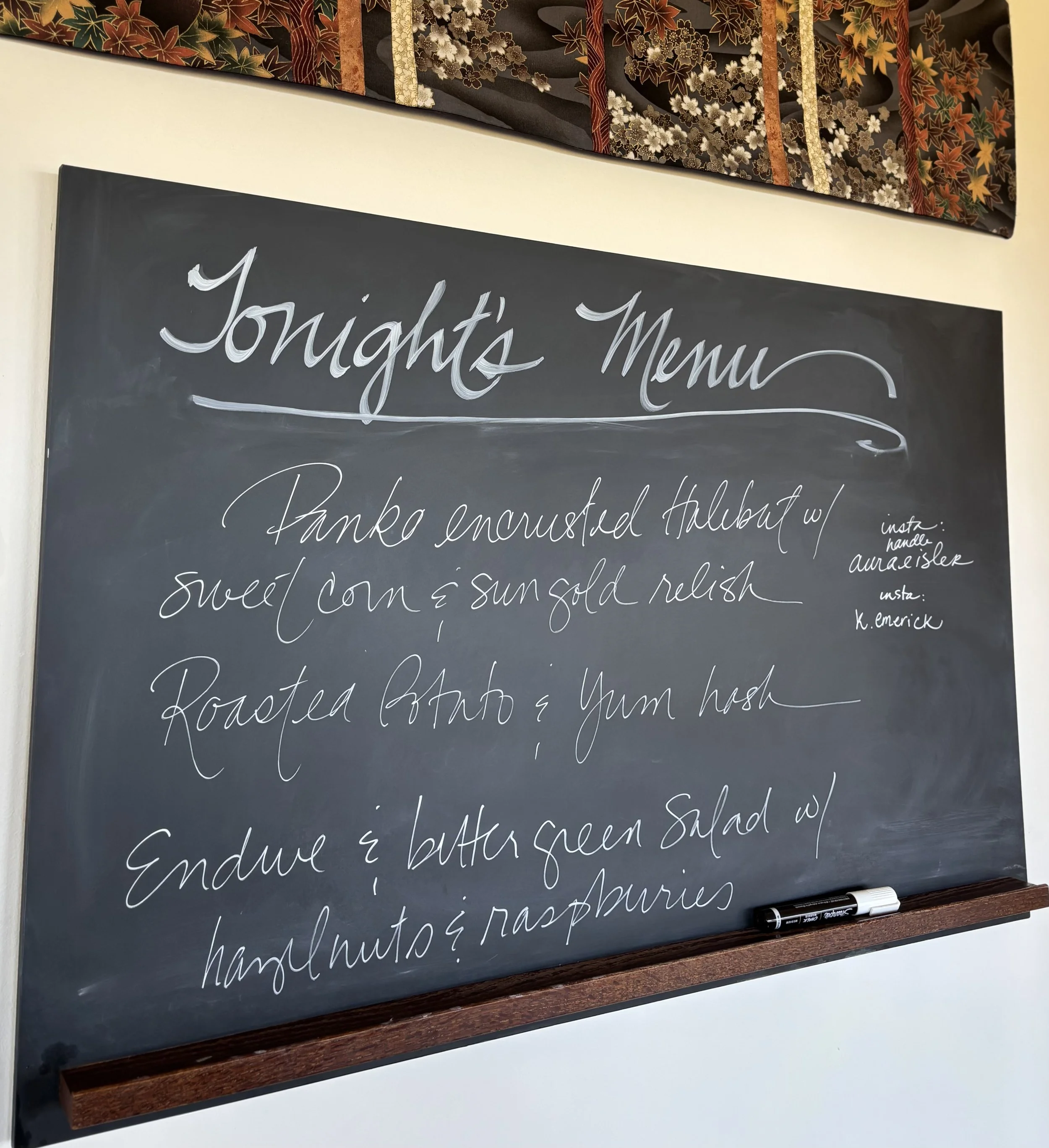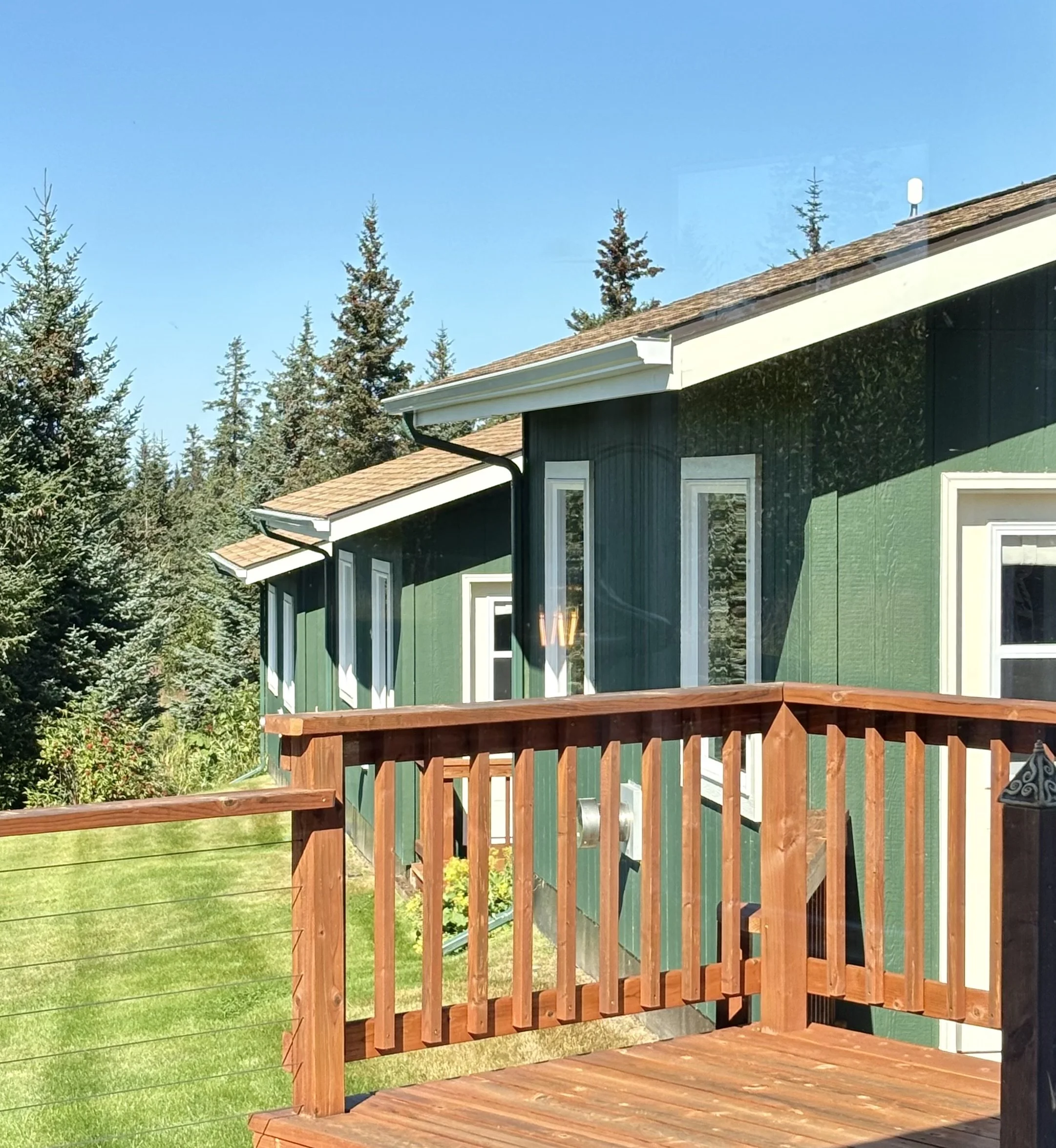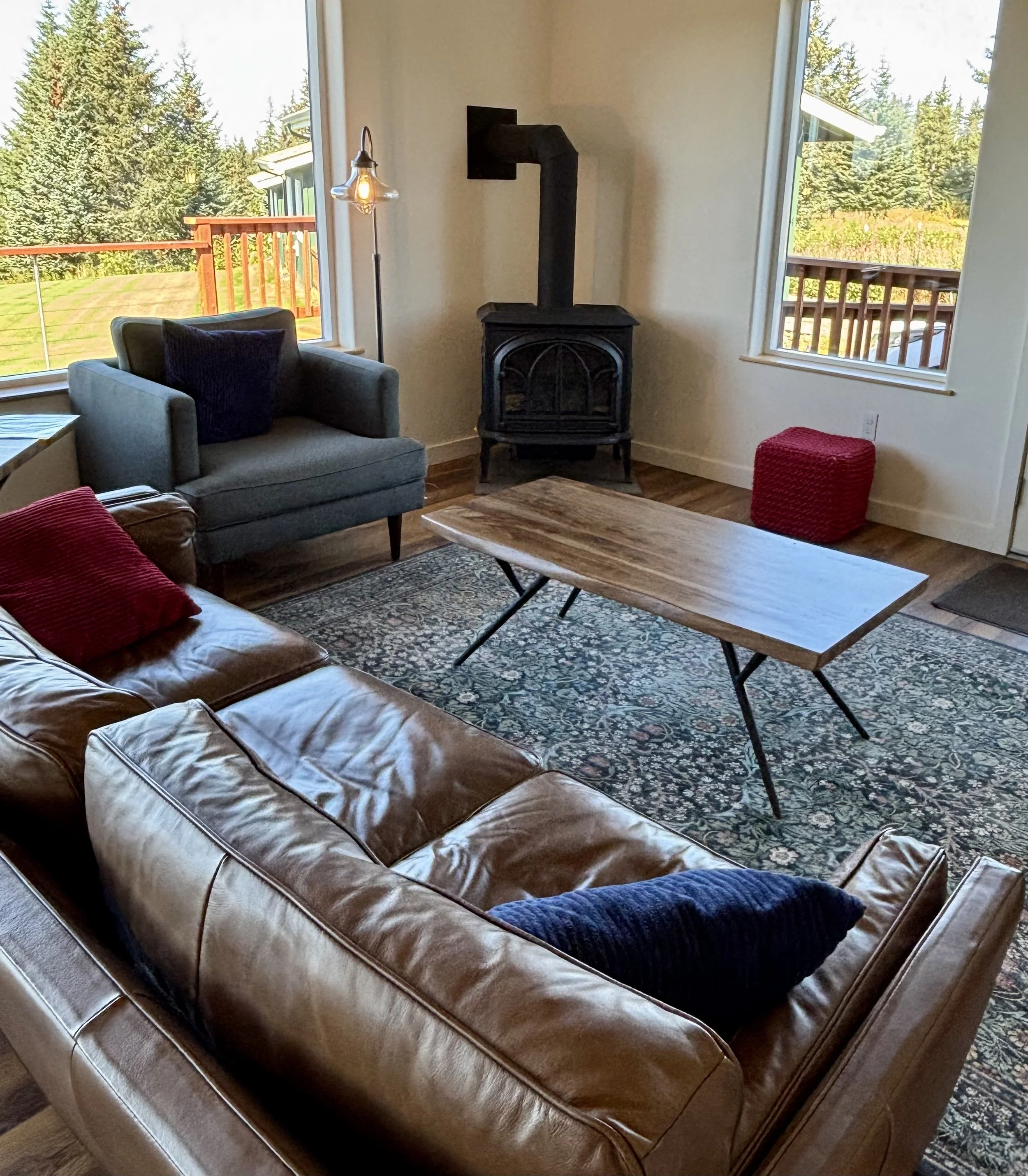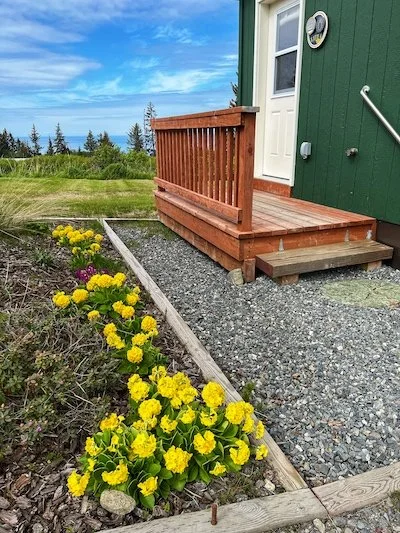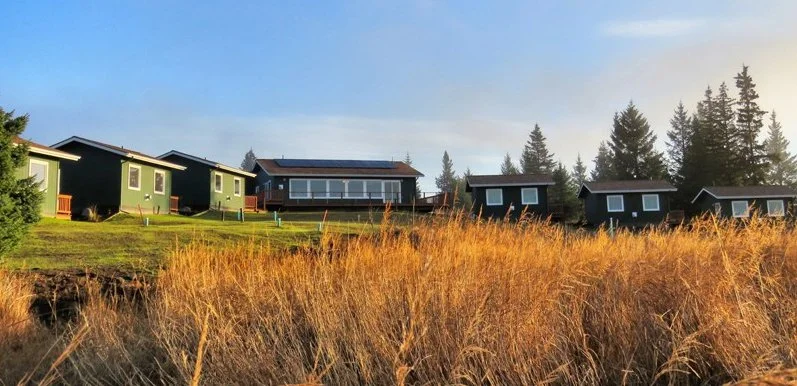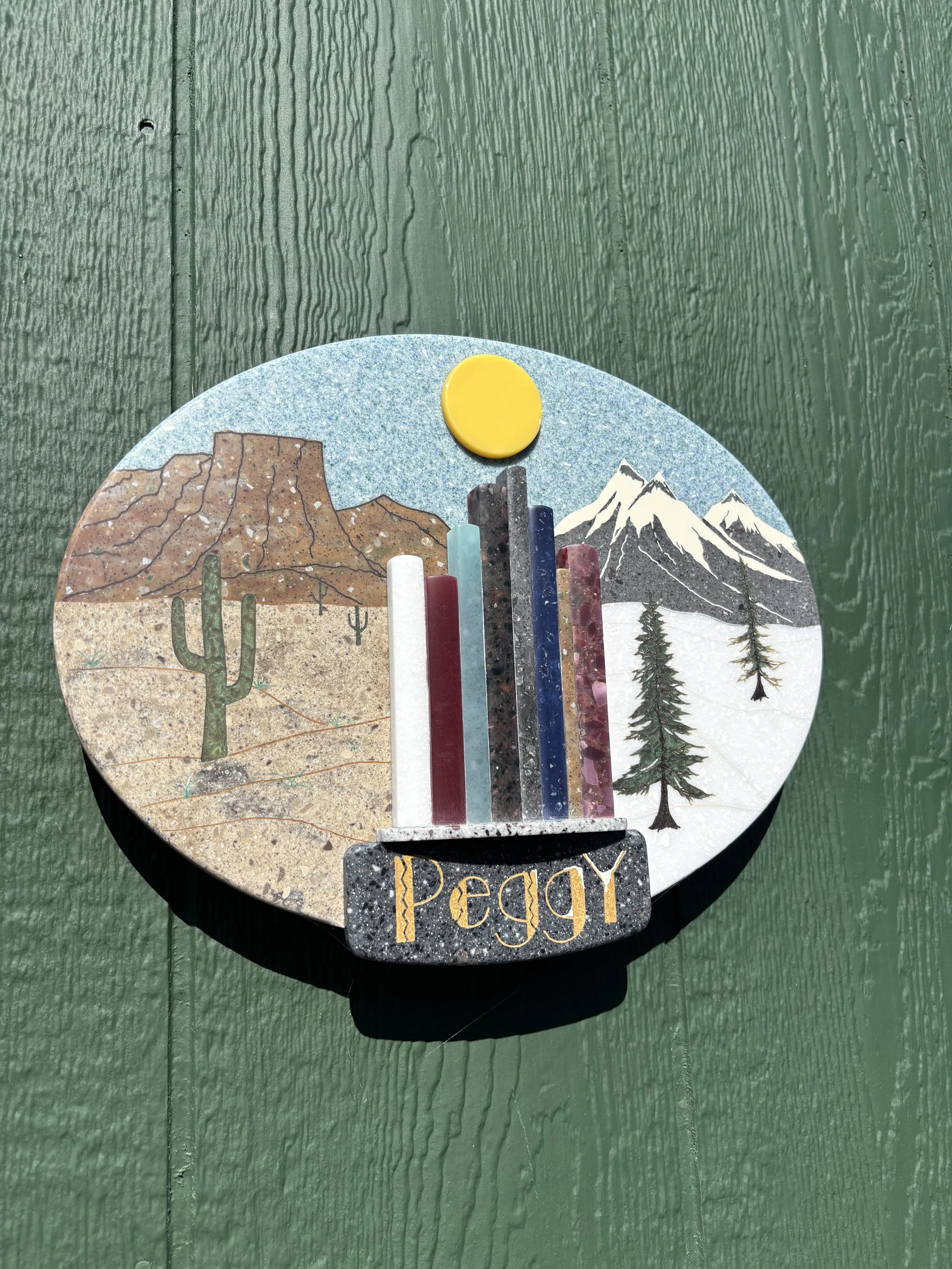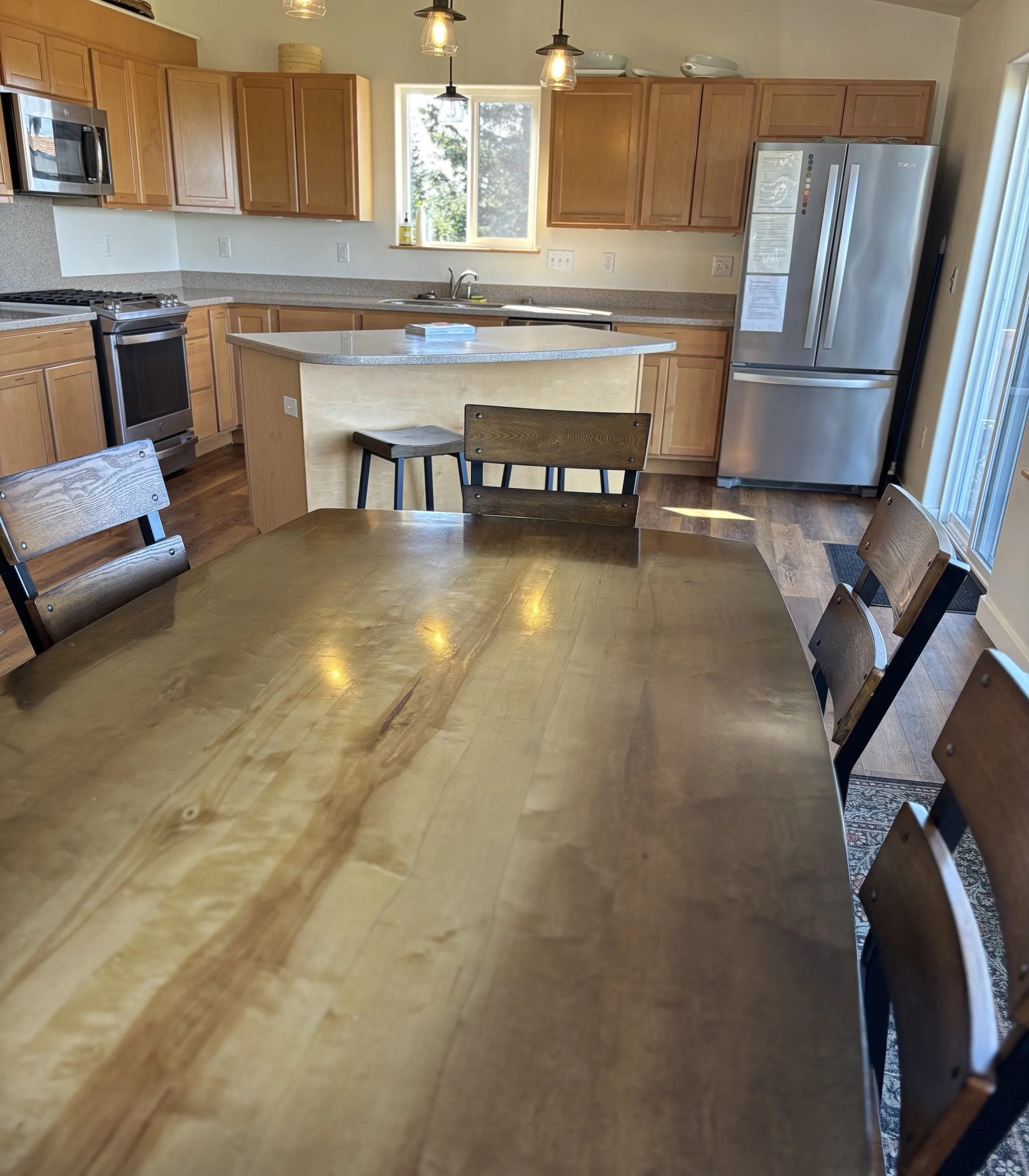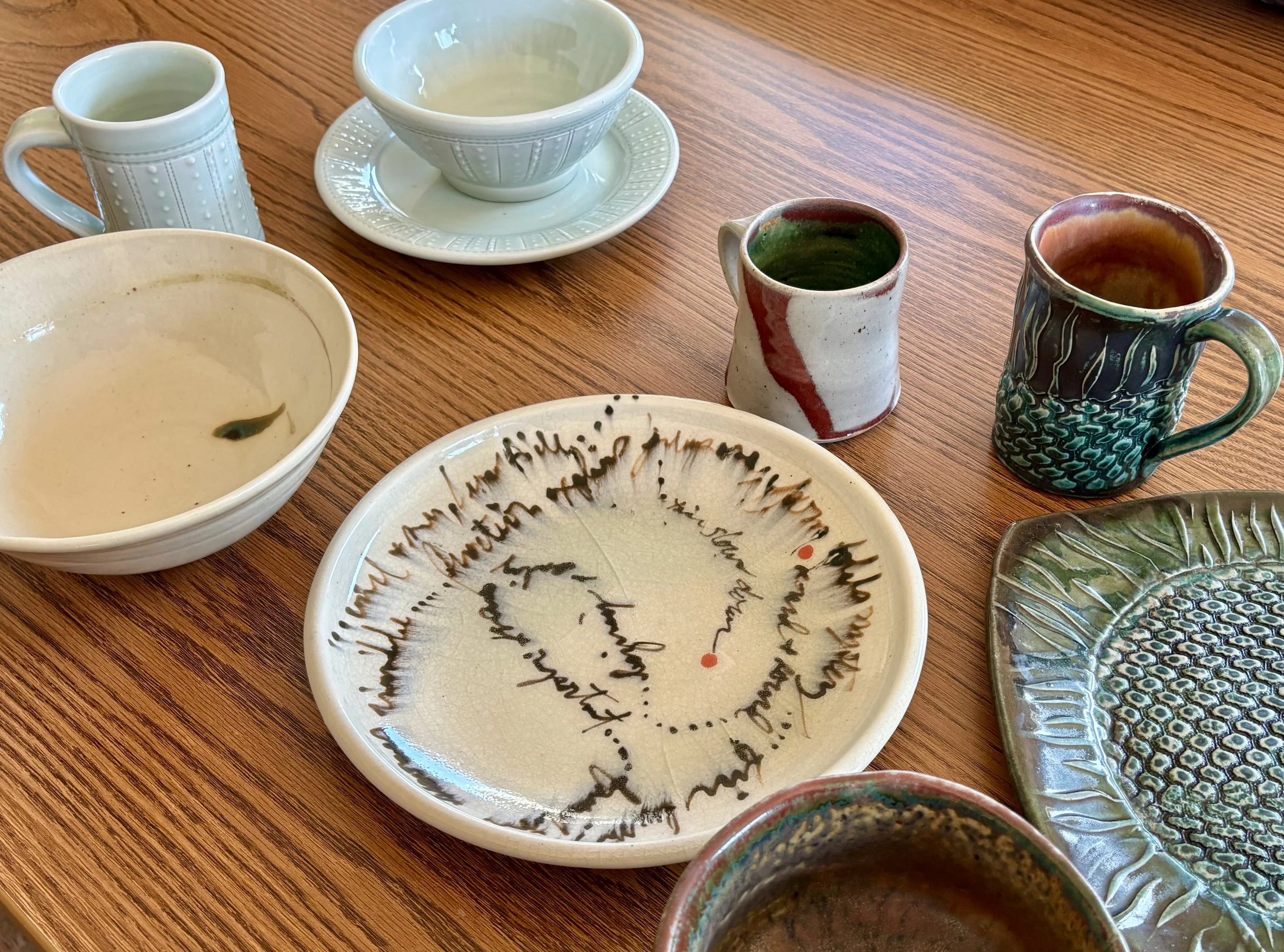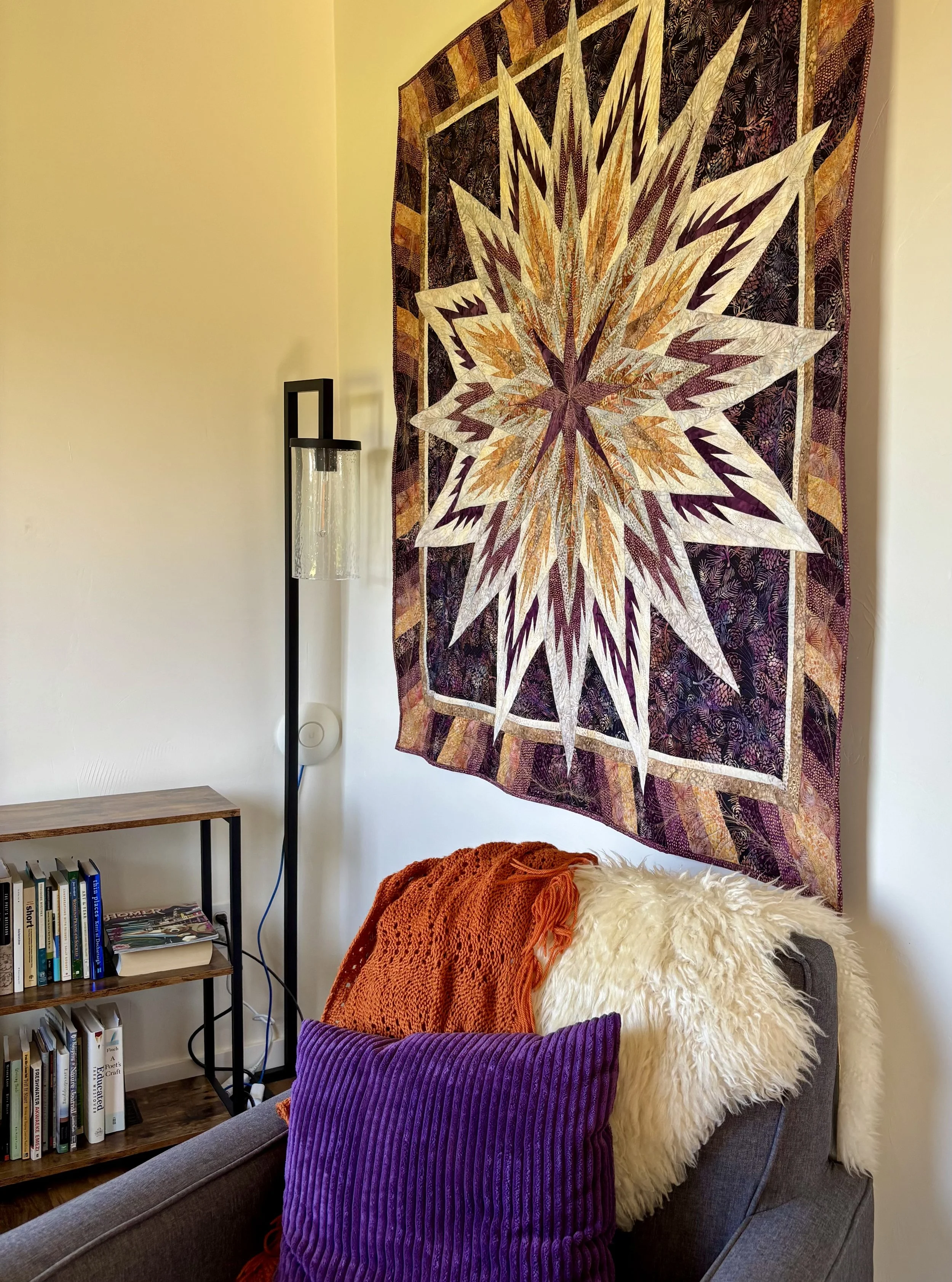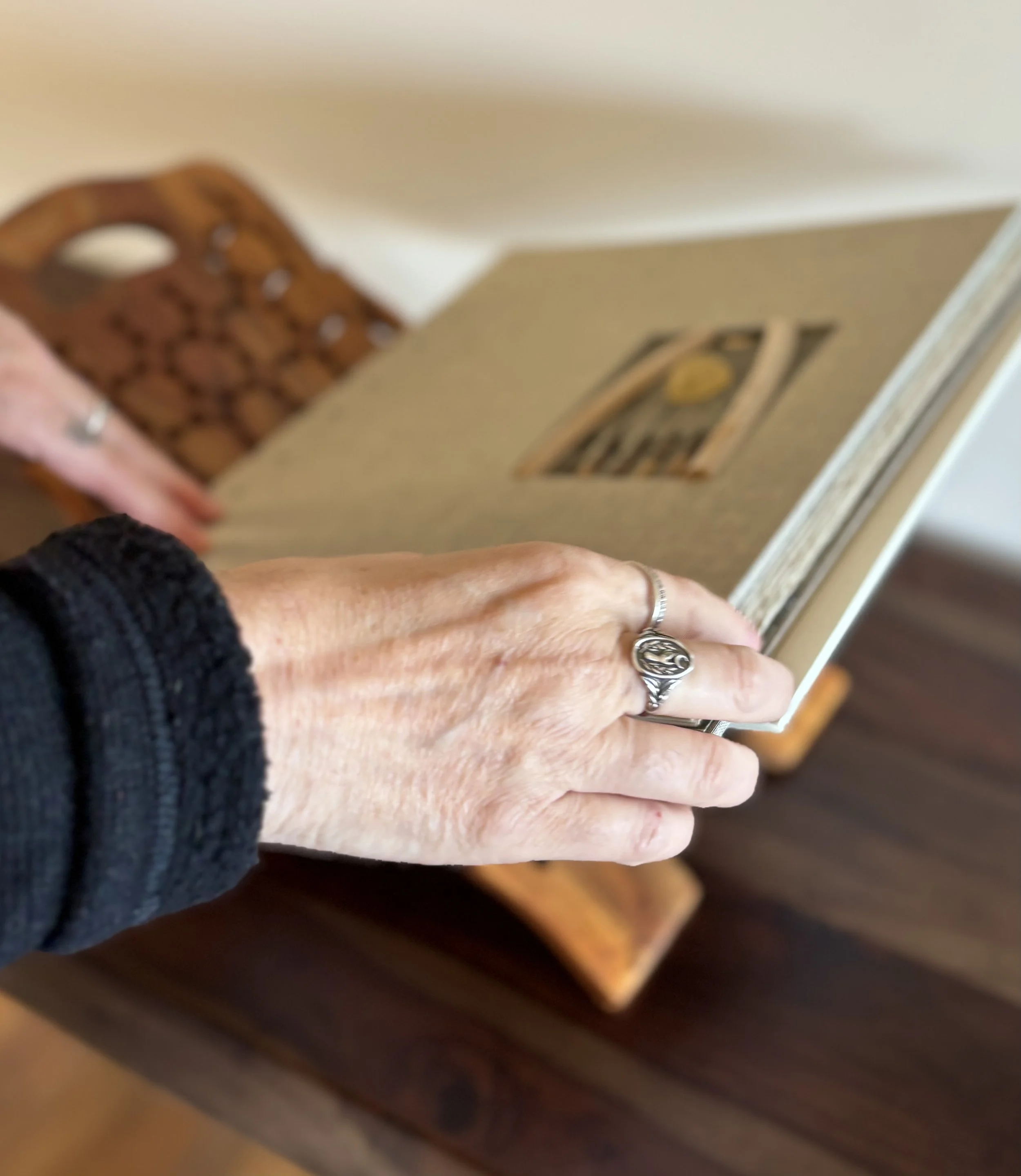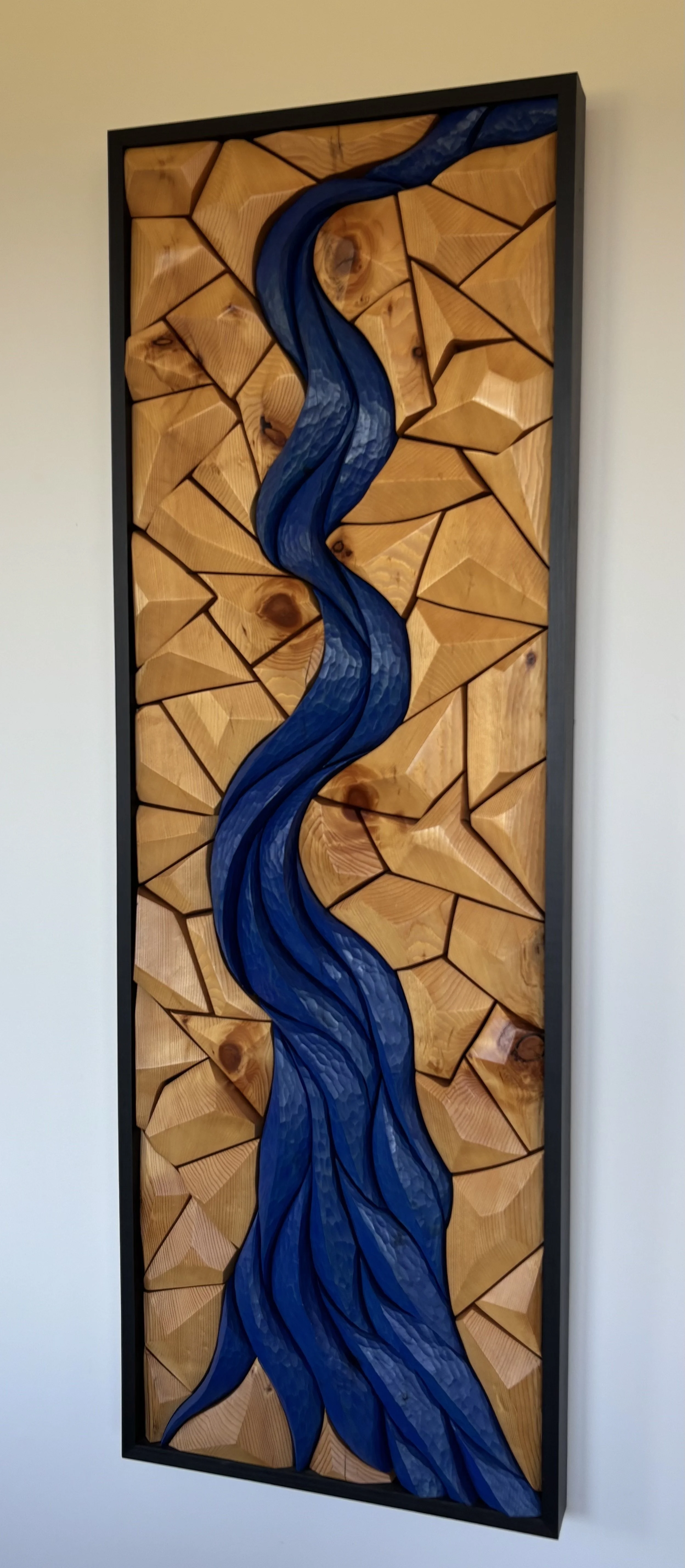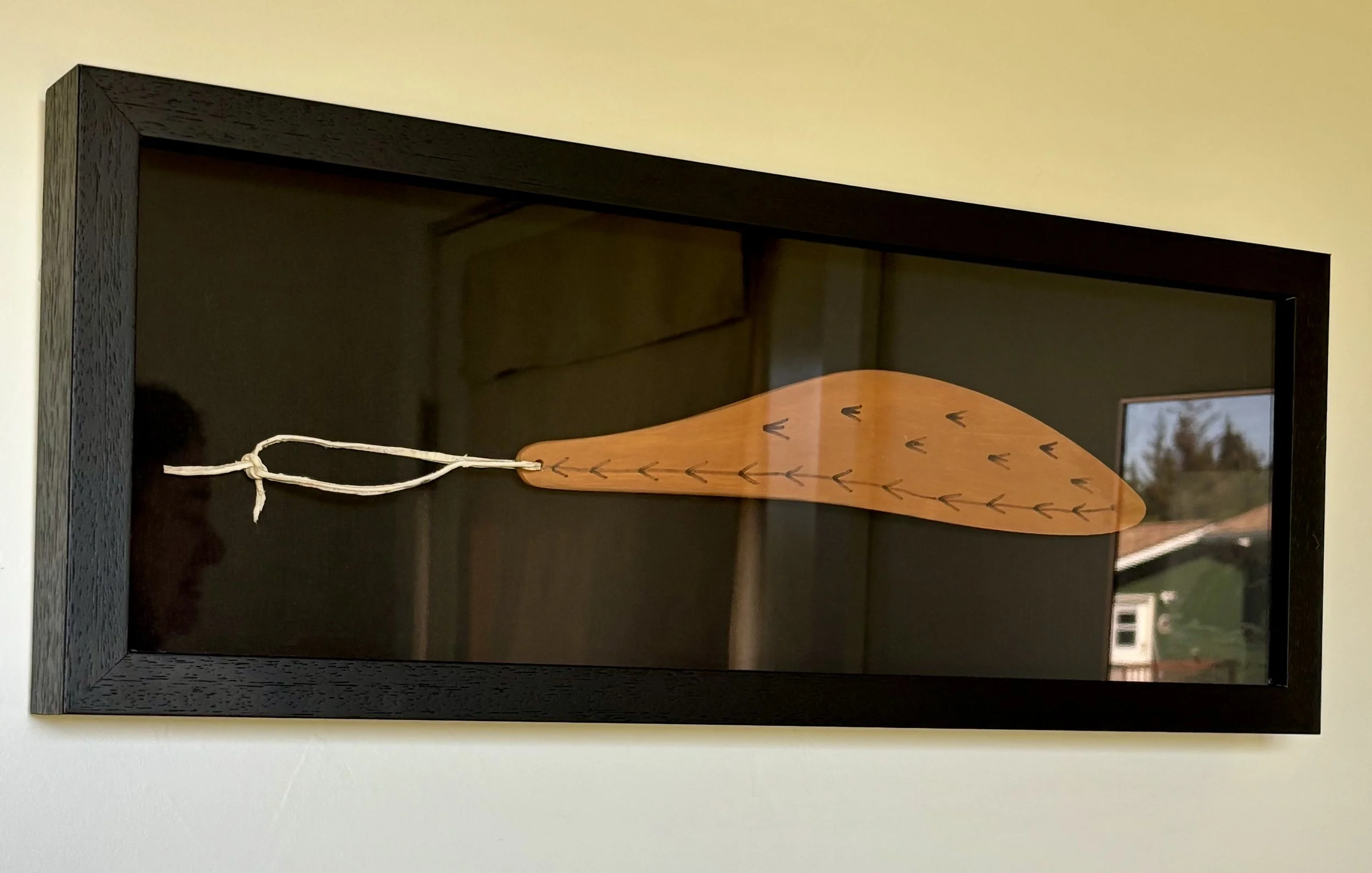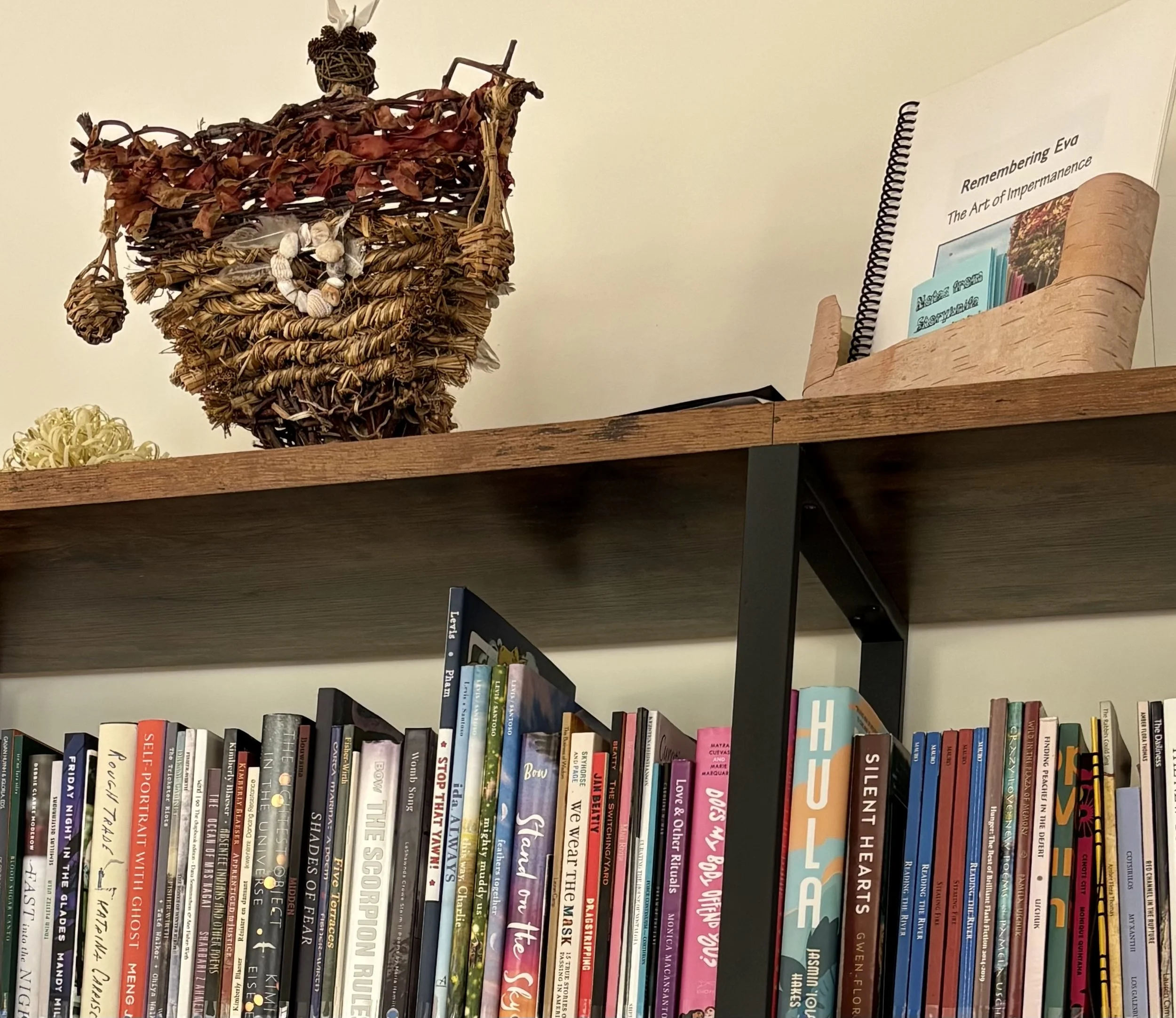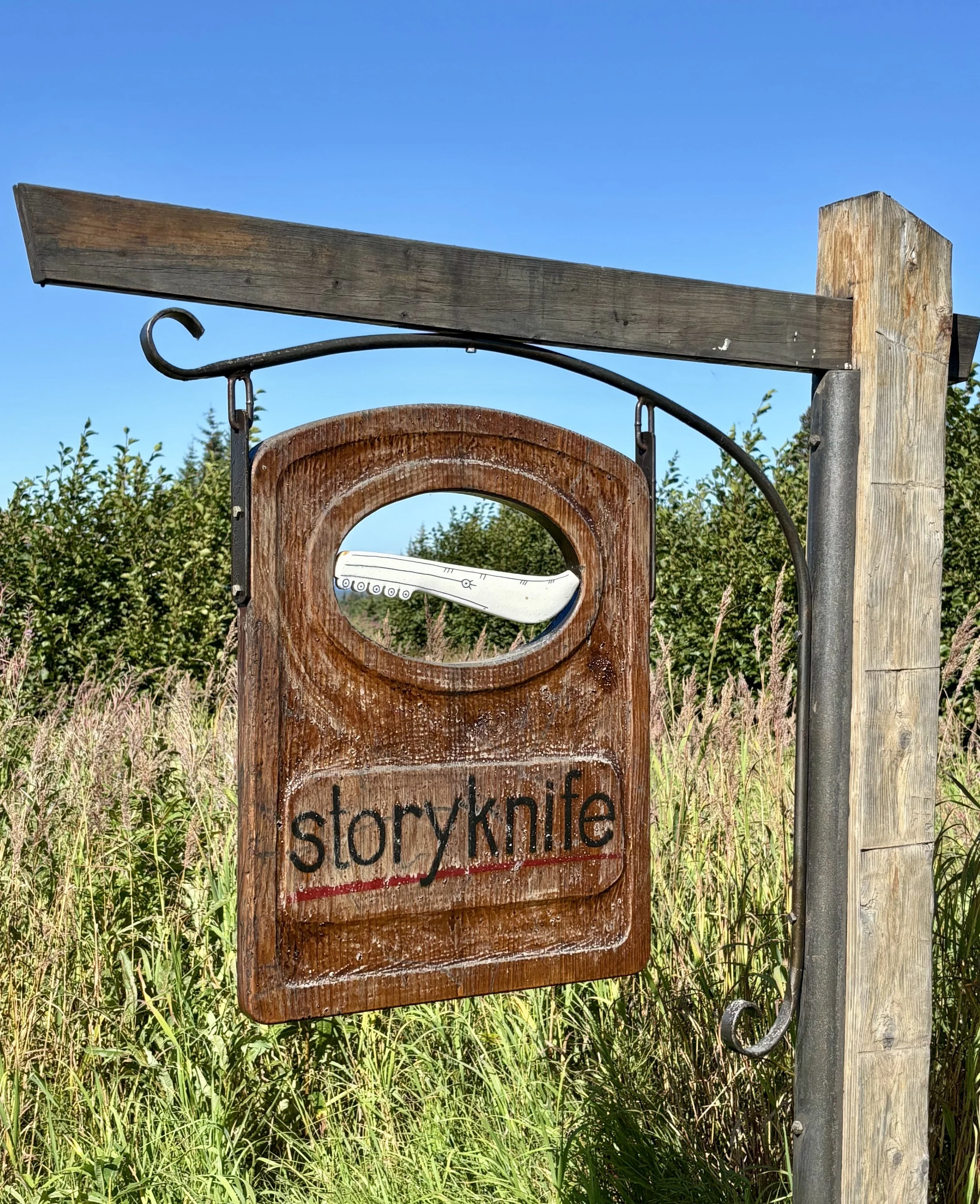The Storyknife Edge - Erin Coughlin Hollowell
/Storyknife Executive Director, Erin Coughlin Hollowell
Holding space is Erin Coughlin Hollowell’s superpower. Knowing what writers need - and what they don’t need - is what Erin does best as she directs Storyknife, a unique writer’s retreat for women in Homer, Alaska.
Storyknife is unique in that is hosts women writers exclusively. More unique? Storyknife costs juried writers nothing to attend. With a residential campus overlooking Cook Inlet - and a sightline to the impressive, snow-capped Mount Iliamna beyond - Storyknife hosts 6 cozy cabins, a commons building, fields of fireweed, remnants of spruce forest, a boardwalk, spots to sit outdoors and bask, and just enough distance from downtown Homer to be both separate and integrally connected to the town’s people and spirit.
The Commons building at Storyknife, with Mt Iliamna and cook inlet in the background
Each month from April to October, selected writers, six-at-a time, settle into the private cabins to write or read or do whatever it takes to “be” a writer. “Society tells women: take care of others first,” Erin says, matter-of-factly. Not so at Storyknife. Erin and her team tend participants, relieving them of daily cares and distraction so each is free to create. “You come, and you be here,” Erin tells prospective writers-in-residence. “We feed you. We hope you will write, but if you sleep all month, that’s OK too.”
The metaphor of a “storyknife” is central to the writerly experience here. An idea borrowed from Central Yup’ik people in Alaska, a storyknife, or yaaruin in Yup’ik, is a traditional tool young girls use to draw a story in snow or sand. Made of bone or antler, wood or ivory, the tool is gifted to a young girl by elder women. Once it is in the hands of a girl, no man may touch it as it symbolizes the power of a woman sharing her specific experiences of the world. “What sparks me,” Erin says, “is that a girl draws a circle with the storyknife, and with that circle, she sets her bounds, and invites others in.” The space within that circle, then, is what the storyteller controls. Safety, camaraderie, knowledge, curiosity, and affirmation are shared and received within that circle. “This is the radical idea of Storyknife,” Erin offers. “Everything here tells [women writers]: ‘You and your stories deserve to be here. You are here based on the strength of your writing.’”
A Hand crafted storyknife on display in a storyknife cabin
While Alaska might seem like a crazy long way to go to sit and write, Erin believes that place is as much a part of Storyknife’s enchantment as its ethos of validating women who write. “Look at this place!” Erin asserts, sweeping her arm in a reverent arc. From every window and front porch across Homer, the natural world entices humans to engage and be inspired. “There is a landscape here you will not find in many places,” she explains. “It’s not just water, but mountains and glaciers and volcanoes.”
Alchemy is also present. “There is a certain fertility here,” Erin says of Homer and its surroundings, “where the ocean mixes with the land. I don’t want to sound woo-woo, but there is a strange, creative impulse in this town.”
Indeed, the town of Homer is full of makers and artists: painters and photographers, metal workers, weavers, potters, musicians. The arts combined with the landscape can produce surprising results. Recent Storyknife attendee, poet Heid E. Erdrich, concurs: “Out of my cabin I could watch the lights of the fishing boats at night,” she says, “and see Augustine and Mt. Iliamna. For me, I need to stare into a broad landscape until I get ideas.” Heid laughs: “There was a lot of staring!” And then, the writing came. “I really needed it,” Heid says, acknowledging her writing groove, retrieved: “I haven’t had that headspace in years.”
Fellow writers, too, are integral to the generative energy of the place. Days at Storyknife are devoted both to solitude, for working, and to socializing, which can also enhance the work. Erin notes: “I love hearing the writers talk over breakfast. They share what they are working on. They ask questions. They give each other ideas, new ways to see, to think about the work.”
Dinner, especially, is a time for the writers to congregate and engage with each other, and attendance in the commons each evening is expected. Poet Heid noticed: “We were having conversations that seemed very important in that moment. And we had time, you know, in the evenings, for in-depth discussions.”
Heid noted how supportive her specific cohort of writers was during her weeks at Storyknife and how taken care of she felt: “I felt no competition, like ‘How much did you get done today?’ which is very different from [my experience at] other retreats.” And, she says, “The food was amazing. They don’t feed you anything trashy! They offered the most wonderful veg, and meals with fish, with kindness. But,” she adds, acknowledging her craving for cinnamon candies when she writes: “you had to get your own snacks!”
Menu board in Storyknife’s commons
Other than snacks, not much is missing at Storyknife. From the day Dana Stabenow, Storyknife’s founder, committed to creating a retreat for women writers (circa 2013), vision and collaboration (with no shortage of grit and elbow grease) have combined to offer a writing sanctuary replete with abundance, reciprocity, and deeply personal touches. “Dana had the land, the plan, a builder,” Erin recalls - a powerful start. Dana tapped Erin to lead Storyknife and leverage her connections from the arts and literary scene across Alaska and nationally to build momentum for the fledgling nonprofit. Erin crafted a business plan, wrote grants, and when the time came, rolled up her sleeves (literally) and assembled furniture for Storyknife from kits on the floor of her garage.
Storyknife campus: A central commons building with individual Writer’s cabins, gathering spaces, gardens
And the community of Homer stepped up as well. Storyknife sold “naming rights” for the cabins - not to corporate behemoths but to locals who wished to commemorate creative women in their midst: Katie K., the Peggy cabin, the Betty, Eva’s House. Erin says she appealed to everyone and anyone in Homer who might like to contribute personally to Storyknife. “We organized a gift registry!” she says. “I thought: people do this for weddings, why not this?”
Unlike a typical wedding registry with a “buy now” list at Target or Home Depot, the collective adorning of Storyknife’s campus came hand-crafted by community and continues to tie Storyknife inextricably to community. Dana’s friends, plus Erin’s friends, and generous supporters of women who write, came forward with thoughtful flourishes to give Storyknife a human, hometown touch:
· “A local woodworker told me, ‘I’m not a writer, but I will always be at the table,’’ Erin says, running her hand along the glossy flank of the dining table carpenter Dave Girard built, graciously curved like a boat and anchoring Storyknife’s commons space
· Erin’s brother donated items for the communal kitchen at Storyknife, announcing, “I will buy the coffee maker if the construction guys can always have a cup”
· Kachemak Bay Quilters, a local sewing collective, made quilts to decorate the cabin walls
· Homer potters threw and contributed bowls, plates, and coffee mugs - one distinctive set for each cabin
· A local peony grower donated plants for the cottage-style gardens outside the cabins, offering: “I will do the gardens. I will bring the plants, divided from my own garden’”
· Artists from around Homer called Erin saying, “I have art. I will donate it!”
Erin’s voice cracks with gratitude when she talks about the beauty on display at Storyknife, both in decoration of the physical spaces and in the writing that emanates from each writerly session. Her certainty and pride are evident as she describes the impact Storyknife has for a community like Homer, for the women who come here to write, and for the world at large: “Every single person has a story that is important to tell,” Erin says. “And the more of those stories we tell, the better we are.”
Attendees at Storyknife write across genre and are diverse in race, age, and lived experience. Some writers are emerging, really beginning to hone their craft; and some Storyknife writers work on manuscripts that are close to publication. All writers apply to a panel of Storyknife advisors and residencies are awarded based on the strength of writing submitted and interesting life stories. Erin says that as of October 2025, 240 women writers have been in residency at Storyknife, and given the number of writers applying, it seems demand is strong. Like many nonprofits in the arts, Storyknife relies on grants from foundations and individual contributions to keep the residency program going. The cost to attend Storyknife – lodging and food - is free for the women selected. Virginia Woolf would be so pleased!
As a published and practicing writer herself, Erin is cognizant of how much work and how much magic goes into writing something of meaning, something that will potentially change the world. Her efforts at Storyknife are as much in service to good writing as they are to the care and confirmation of good writers. With Mt Iliamna as talisman, paired with moose sightings, warm bread, and conversation, Erin’s best advice comes from poet Mary Oliver, whose words she wears on a bracelet on her wrist: “Pay attention. Be astonished. Tell about it.”
Resources:
Storyknife: https://storyknife.org/
Photos by Tracy Nordstrom
Virginia Woolf famously said “A woman must have money and a room of her own if she is to write fiction.” Here, here!
example of Monthly live readings for the public from Storyknife attendees


